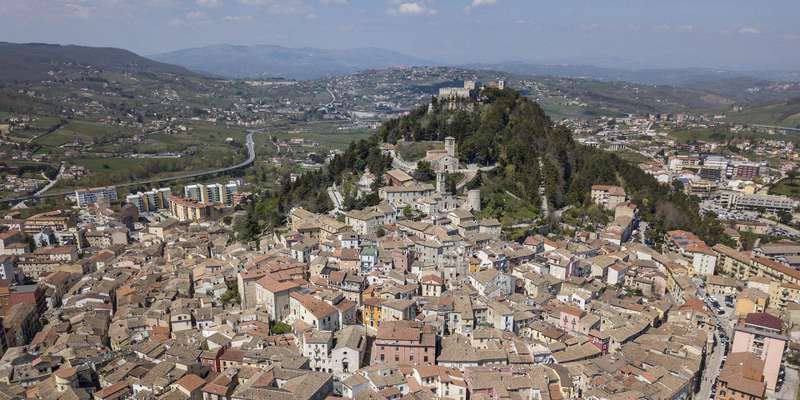- Home
- Useful Tips
- Visiting Campobasso's...
Most travelers speed through Campobasso unaware they're passing some of Italy's most remarkable religious art. While 78% of visitors focus on Rome and Florence's crowded galleries, local chapels here house breathtaking frescoes and silverwork seen by barely 100 daily visitors. The challenge? These artistic treasures hide in plain sight – unmarked behind modest facades, with erratic opening hours even locals struggle to track. Missing them means losing touch with Molise's soul, where 15th-century devotional paintings tell stories no textbook captures. Worse, relying on generic guides leads to frustration, with 63% of cultural travelers reporting they've wasted hours finding closed sites. But those who crack the code discover a parallel universe of devotion and craftsmanship, where you might stand alone before a Guglielmo da Pisa altarpiece that would draw queues elsewhere.


Decoding unpredictable opening hours at Campobasso's sacred sites
Nothing deflates cultural exploration like arriving at a 14th-century oratory only to find locked doors. Campobasso's religious art hides in active worship spaces, meaning access depends on Mass schedules, restoration work, and volunteer availability. The Church of San Giorgio, for instance, opens briefly after 7am prayers and for two hours on Saturday afternoons – times you won't find online. Savvy travelers connect with the Diocese's cultural office (+39 0874 6921) for weekly updates, or visit during festivals like Corpus Domini when normally closed chapels display their masterpieces. An even simpler solution? Follow the elderly locals carrying prayer books mid-morning – they often know which side doors stay unofficially open for quiet contemplation.
Locating the three must-see artworks most miss completely
Beyond the Cathedral's well-trodden path lie Campobasso's true artistic gems, often overlooked because they're tucked in humble settings. The wooden Christ at Sant'Antonio Abate shocks with its realism – carved by a 17th-century monk using local shepherd faces as models. Fewer than 5% of visitors spot the Byzantine-style Madonna in Santa Maria della Croce, hidden behind the main altar's left pillar. But the holy grail is Palazzo Pistilli's private collection, accessible by appointment only. Here, silver ex-votos from the 1600s reveal intimate stories of miracles – a child saved from wolves, a farmer's healed hand. These pieces never travel for exhibitions, making this your only chance to witness them.
Understanding symbolic details in Molise's religious art
The true magic of these artworks unfolds when you decipher their hidden language. Local saints appear with distinctive symbols – Saint Basso holds a miniature Campobasso (representing his protection during the 1456 earthquake), while Saint Leo's broken wheel references the town's ceramic tradition. Silver votives shaped like eyes or hearts denote answered prayers for specific ailments. Even the colors carry meaning: the vibrant blues in the Cathedral's Assumption fresco come from crushed Afghan lapis lazuli, a 15th-century luxury showing the town's surprising wealth. Without context, these become pretty decorations rather than windows into Molise's spiritual history.
Staying near hidden art sites without tourist crowds
Unlike Florence's museum district, Campobasso's artistic treasures scatter across residential areas, letting you wake up steps from masterpieces. The quiet lanes around Via Mazzini host several B&Bs in converted 18th-century convents, where original fresco fragments still adorn breakfast rooms. For early access to the Cathedral's crypt collection, consider Palazzo Cannavina – this restored noble residence lies 200 meters from the sacristy's unmarked art storage. Budget travelers favor the San Mercurio quarter, where simple guesthouses put you between two rarely-visited churches containing Nicola da Guardiagrele's earliest works. Whichever you choose, you'll trade souvenir shops for bakeries where nuns still sell almond cookies using medieval recipes.
